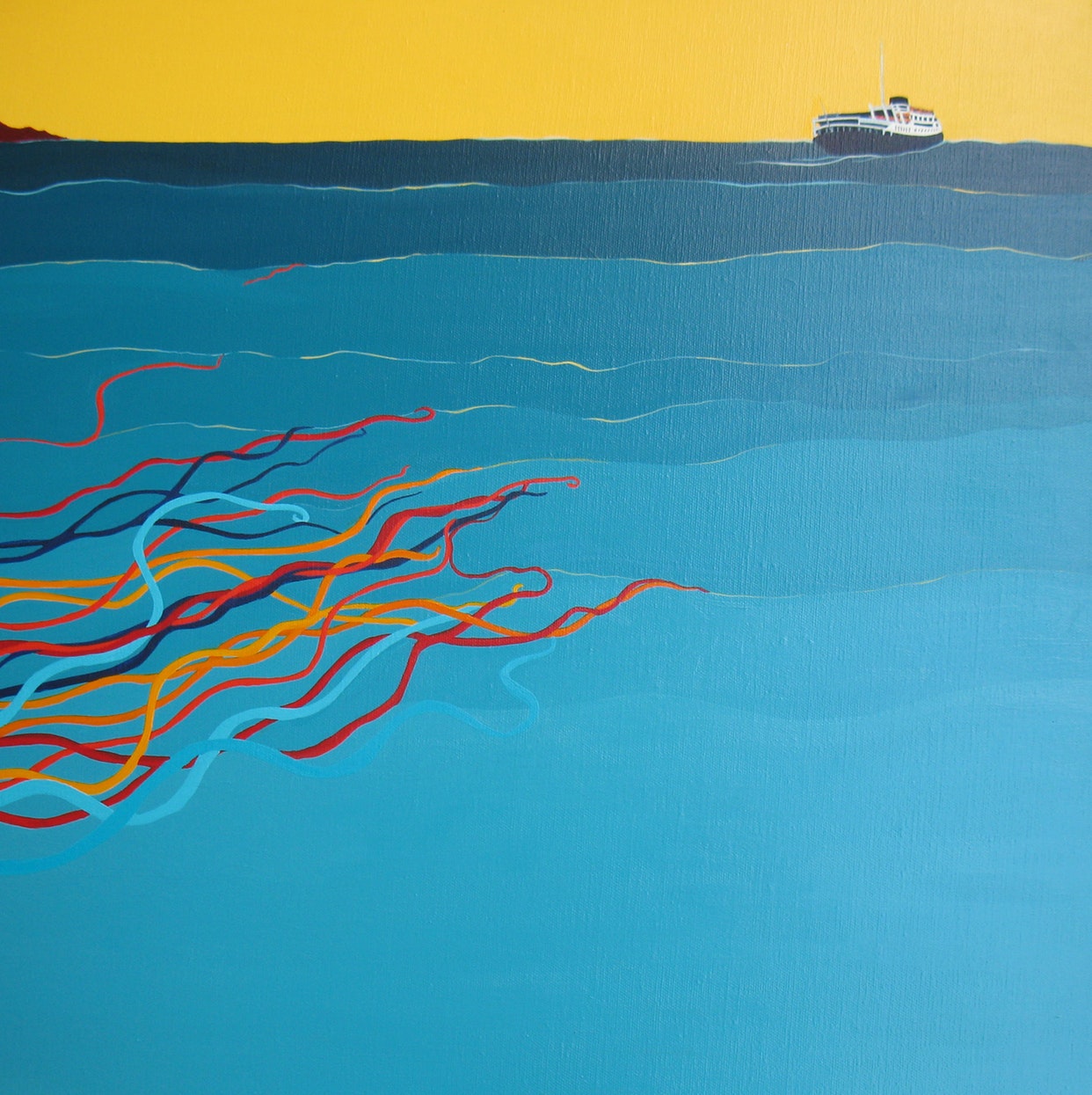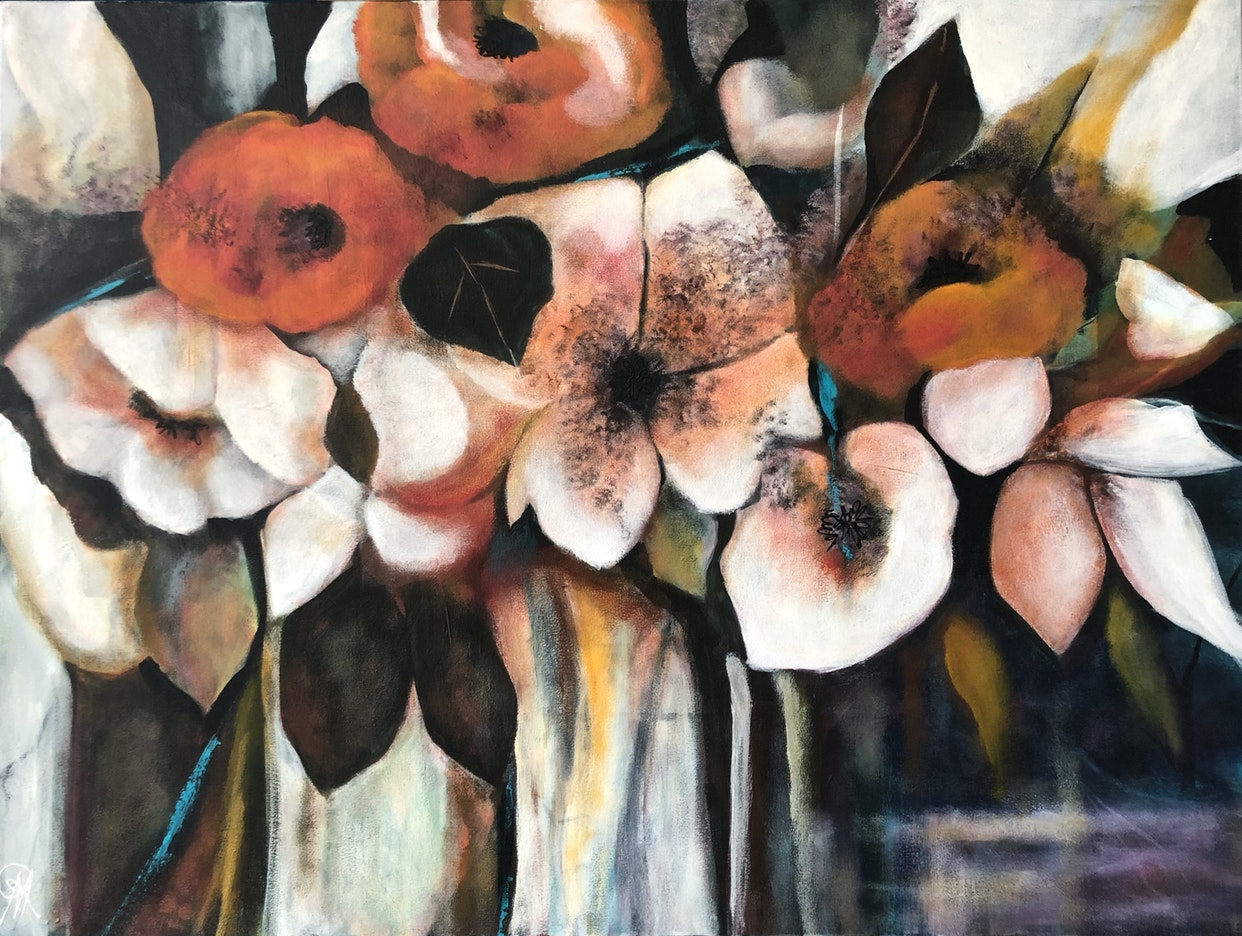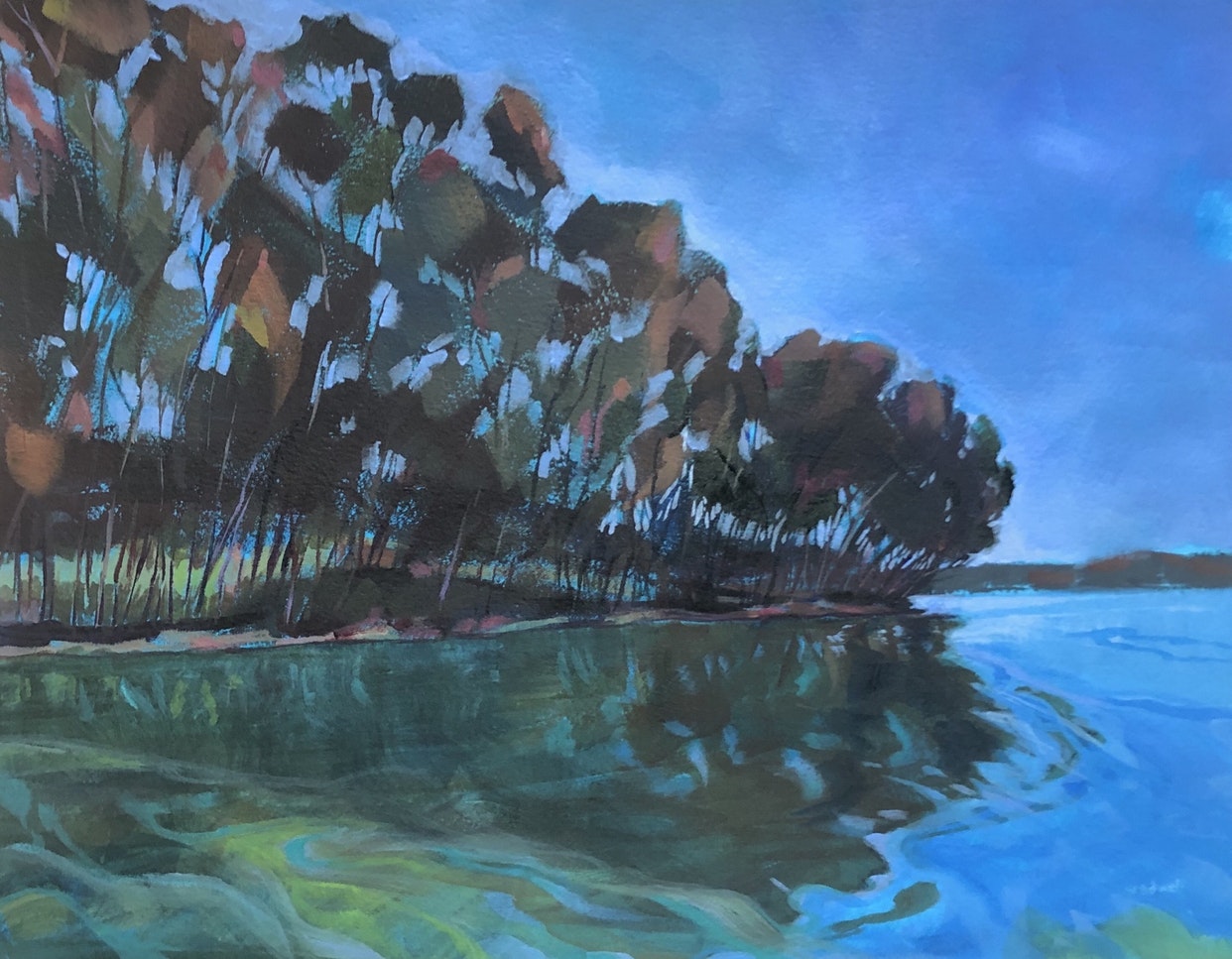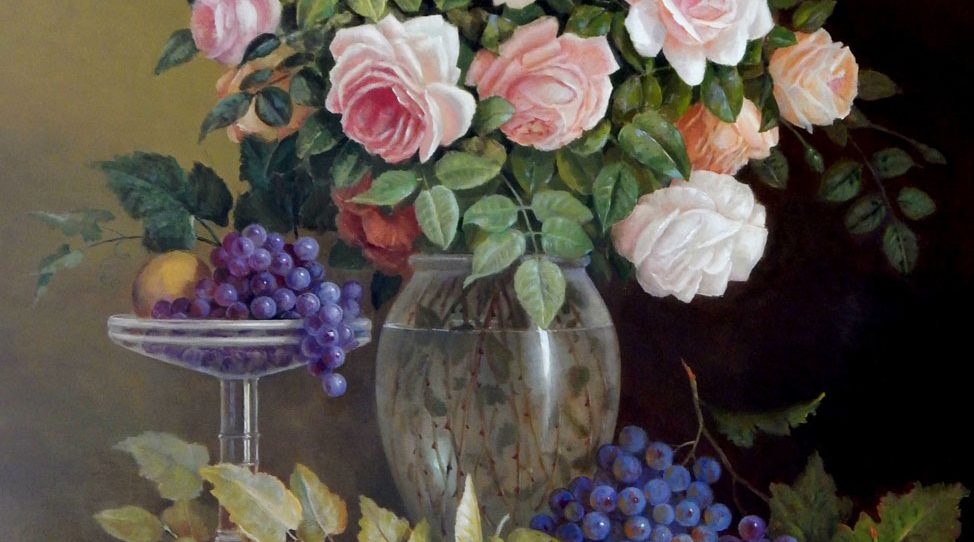An Artist’s & Collector’s Guide to Acrylic Paintings
Quick Facts:
- Acrylic paint is fast-drying and water-based, which, depending on use, can change in texture and final appearance
- Vibrant in colour
- Widely used by artists since the 1960s, acrylics are known for their versatility and speedy drying time
- Easy to care for – give a light dust every now and then
- Can be applied in thin layers or washes to create effects that resemble watercolours or thick layers of paint to mirror oil paintings
- Click here to browse acrylic paintings for sale on Bluethumb

The fluid effect in Amanda Krantz’s artwork is mainly achievable because of acrylic paint. “I started out using oils, but made the switch to acrylics about 12 years ago when I discovered their versatility. It was around the time that paint technology was advancing and companies such as Golden, Matisse and Liquitex had begun releasing an array of media. Globally, artists started to experiment with these – that’s when things really got fun!”
Acrylic Paintings for Artists
Without going too far down the science rabbit hole, acrylic is water-based fast-drying paint that use a synthetic resin to bind pigments. Widely used by artists since the 1960s, acrylics become water-resistant once dry.

Bluethumb recently launched their Melbourne Gallery! This wall features some of our bestselling artists (who, coincidentally, love working with acrylic!): Aidan Weichard and Katie Wyatt
Whether you’re pressed for time or love the feeling of creating swiftly, acrylics are the perfect medium when time is of the essence. The room to modify the appearance of acrylics is expansive – painters can easily tweak the texture, hardness and overall appearance by adding more or less water. In this way, an acrylic painting might resemble a watercolour painting, or show the thickness of an oil piece. To do this, the application of acrylic paint may involve thin layers or washes to create effects that delicate nature of watercolour, or thickening agents and gels to bring oil-like thickness to a painting.

Award-winning artist Marian Quigley‘s Migration series reflects on broken ties and homeland; the series uses acrylic paint to create the flat shades of blue denoting depth and matte streamers. “I use Matisse acrylics – I love their vivid colours and the fact they dry quickly,” Marian explains. “The only quibble I have is that they dry darker than when applied, so it sometimes take a few attempts to get the tone you want.”
Because of their flexibility, many artists find freedom in using acrylics. Their usability on various surfaces, combined with their versatility in texture gives a painter a wide scope of possibilities. “Oil paint lent itself to extreme darks and lights, with not much in between. When I use acrylic paint, the outcomes tend to be a lot lighter and freer flowing, bestselling landscape artist Meredith Howse recently explained in an interview. Additionally, many artists often praise the hues acrylics can achieve. “The colours these days are amazing! I use Hydrocryl, an Australian brand. The colours are so vibrant and wonderful to use,” Bluethumb artist Julie Hollis adds.

Autumn Vase by Marion Rispin shows silky tones and soft form through acrylics, complimenting the still life composition perfectly.
The pièce de résistance to any acrylic painting should always be a good varnish. Varnishing your artwork not only protects the painting from yellowing, UV rays and dust; it pulls the painting together by adding a little layer of shine and brings out those vibrant hues from the paint.
Find out more info on the differences between acrylics and oils here.
Acrylic Paintings for Collectors
While it may be a relatively young medium, the resourceful nature of acrylics lends itself to varying qualities that are are as appealing for collectors as they are for artists. Visually intense, they allow room for new sensory experiences for first-time buyers and experienced collectors alike.

Kate Gradwell‘s piece ..Perfect The Next! shows acrylic paint on watercolour paper. This marries flawlessly with the subject matter. “I paint in both oils and acrylics. I love acrylic paint for its versatility and speed of drying. It’s so easy to create transparent glazes as well as experiment.”
Because of the liberty artists have to change the thickness of acrylics with water or gels, the texture, application process and consequent appearance varies greatly from painting to painting, or artist to artist. Artists such as Tatiana Georgieva distinctively use acrylic paints to bring thick, heavy texture to a piece; others, like abstract artist Dinah Wakefield, employ acrylics to create flow with a watery, dreamlike form.

Welcome to paradise! Susan Trudinger is one of Bluethumb’s bestselling artists and consistently demonstrates the fun and flexible side of working with acrylics
So, let’s say you’ve found the acrylic piece that’s right for you. Cleaning an artwork might seem like a bit of maintenance, but acrylics are quite easy to take care. Plus, a little TLC will keep it looking swish for years to come! “I would always recommend checking if the painting is varnished when purchasing – it’s that little bit easier to clean if so, and gives it so much more of a lifespan. Framing the piece will help preserve it as well,” Bluethumb curator Sarah advises. “If you want to keep it looking fresh, give it a bit of a dust from time to time; I’d steer away from water, though, as this can change the appearance of the paint. It doesn’t take much effort and keeps that wall candy looking like new!”
Ready to find that perfect piece? Click here to get stuck into our recent curation of art for the first time buyer.














Thank you , love Acrylics so versatile, good basic info
Congratulations to Bluethumb on opening of your amazing Gallery recently. I was sorry to miss it as I was overseas at the time. I will look forward to dropping in one day soon to meet the team.
Catherine Fitzgerald ( artist)